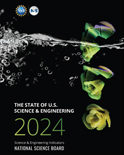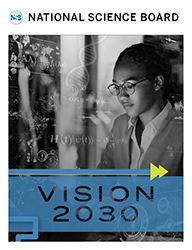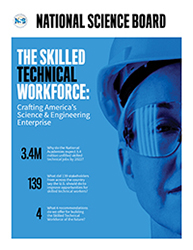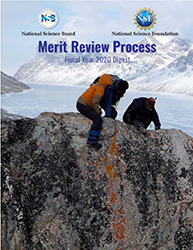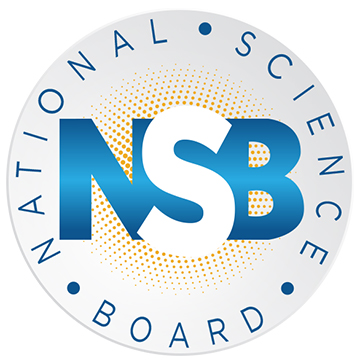
John Hennessy to receive the National Science Board Vannevar Bush Award
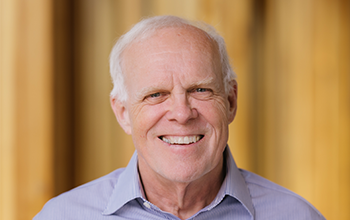
2024 Vannevar Bush Award recipient John Hennessy (Credit and Larger Version)
April 16, 2024
Alexandria, Va. – The National Science Board will recognize John L. Hennessy as the 2024 Vannevar Bush Award recipient on May 1, 2024, during the National Science Foundation Awards Gala at the Renwick Gallery in Washington, D.C.
Hennessy is an innovator and entrepreneur who has made pioneering advances in computer architecture and led both academic and corporate endeavors. He served Stanford University as its president from 2000-2016 and not only helped create a technology that revolutionized computing, but also transferred that technology to industry.
“We are thrilled to celebrate John Hennessy as this year’s Vannevar Bush Award recipient,” said Dario Gil, the Chair of the Board’s External Engagement Committee and Senior Vice President and Director of IBM research. “His pioneering advances in computer architecture and dedication to building the future STEM workforce not only reflect the ideals set forth by Vannevar Bush, but they also help spur our national economy and security.”
The Vannevar Bush Award honors exceptional lifelong leaders in science and technology. The Board established this award in 1980 in the memory of Vannevar Bush, who inspired the creation of the National Science Foundation.
The early innovator
Receiving the Vannevar Bush Award harkened Hennessy back to his early days in academia when he was chosen as part of the very first cohort of the NSF Presidential Young Investigator Award (now known as the NSF CAREER award, NSF's most prestigious award in support of early-career faculty). “Public funding for science provides a foundation for basic research,” Hennessy said. "The results are also usually for public rather than private good and help enhance what we know about our lives and planet.”
Hennessy, a professor of electrical engineering and computer science at Stanford University, is now on the opposite end of the equation. He cofounded and directs a graduate fellowship program at Stanford Universitycalled Knight-Hennessy Scholars, which is the largest fully endowed graduate-level scholarship program in the world.
"I loved being a graduate student,” Hennessy said. “It was that magic combination of finding something I loved doing and also aligned with the way my brain worked. With Knight-Hennessy Scholars, we are cultivating a growing global community of visionary, courageous, and collaborative leaders committed to creating positive change in the world.”
His love of learning started as a child growing up on Long Island during the Sputnik era. “My father was an aerospace engineer who would take on graveyard shifts sometimes,” he said. “While he was out, my mother would read books to us and instilled a love of reading and learning.” He also recalled his father bringing home a computer made up of mechanical parts that could do basic logic and arithmetic. “It really propelled my interest in science,” Hennessy said.
His early scientific prowess even sparked a romantic connection. "I met my wife of 50 years while we were both working at a grocery store, but what won her over was my high school science project,” Hennessy said. “It was a tic tac toe machine that used surplus relays to never lose.”
The accidental entrepreneur
Hennessy began his career in academia. He joined Stanford’s faculty in 1977 as an assistant professor of electrical engineering. In 1981, he drew together researchers to focus on a technology known as RISC (Reduced Instruction Set Computer), which revolutionized computing by increasing performance while reducing costs. Hennessy helped transfer this technology to industry, cofounding the company MIPS Computer Systems in 1984.
“From the time I was an undergraduate student, I wanted to be an academic and focus on teaching and research,” Hennessy said. I never thought I’d be an entrepreneur and start a company.” However, he saw a need to join forces with his colleagues and create a startup company to bring their new technology to the world.
His subsequent research focused on multiprocessor systems, including the DASH and FLASH projects, both of which pioneered concepts now used in industry.
He was appointed as the inaugural Willard R. and Inez Kerr Bell Professor of Electrical Engineering and Computer Science at Stanford in 1987, then went on to serve as chair of Computer Science (1994-1996), dean of the School of Engineering (1996-1999), and university provost (1999-2000) before being appointed as Stanford’s 10th president in 2000, a role he held until 2016. As president he focused on increasing financial aid and on developing new initiatives in multidisciplinary research and teaching. “Universities need to be more outward looking – how can they contribute to understanding and solving big problems like climate change?” Hennessy said.
He was the founding board chair of Atheros Communications, one of the early developers of WiFi technology, and has served on the board of Cisco and Alphabet (Google’s parent company), where he is currently chairman of the board. He is the coauthor (with David Patterson) of two internationally used textbooks in computer architecture. “Our textbook aims to prepare students for the next decade,” Hennessy said. He and Patterson are currently finishing the seventh edition of their textbook.
“I’m a lifelong learner,” he said. “As Vannevar Bush said, science is the new frontier. There are still so many questions to resolve, especially on the nature of life and the universe.”
Media Contact: Nadine Lymn, nlymn@nsf.gov, 703-292-2490
Useful NSB Web Sites:
Home Page: http://www.nsf.gov/nsb
Media Contact: http://www.nsf.gov/staff/staff_bio.jsp?lan=nlymn&org=NSF
News: http://www.nsf.gov/nsb/news
Meetings: http://www.nsf.gov/nsb/meetings
Publications: http://www.nsf.gov/nsb/publications
Facebook: https://www.facebook.com/NationalScienceBoard
Twitter: Twitter: https://twitter.com/intent/user?screen_name=NSF_NSB
YouTube: https://www.youtube.com/channel/UCkrHRzuGSrPp2haQs0T_Pww
To view PDF documents, please download Adobe Acrobat Reader.
